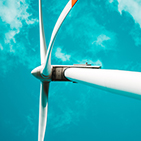News and Blog

Solar inverters have one core function: convert the direct current (DC) solar panels generate into an alternating current (AC), which is the type of electricity used in your home.
Inverter technology has been steadily evolving over the past several decades to better enable homeowners to reap maximum power from their PV systems. Both string inverters and microinverters do this job for you as a solar homeowner, but go about the process in different ways.
Let's take a closer look at what string inverters and microinverters are, and how they stack up against each other for use in your solar energy system.
What is a string inverter?
A string inverter is a standalone box that is typically installed close to your main service panel and electricity meter.
There is typically only one single inverter, or possibly two string inverters on each residential solar installation; it really depends on the overall solar power system size.
A string inverter functions in a series circuit, with there usually being 6 to 12 individual solar panels in what is known as a "series string."

Advantages of string inverters
Easy to troubleshoot
The main advantage of a string inverter is that you only need one of them to convert the DC electricity coming from your solar array to AC power. If anything is going to fail in a solar system, it is likely to be the inverter - making troubleshooting relatively easy when things go wrong.
Cost
Installing a single string inverter on a solar panel installation is cheaper than installing microinverters. Less labor hours are required, and string inverters are more affordable than many microinverters.
Lower probability of wiring mishap
There are less connections between solar panels and the string inverter. Therefore, there’s a reduced chance that a string inverter setup will be improperly cabled, compared to a microinverter system.
Disdvantages of string inverters
Efficiency in partial shade
Since string inverters require solar panels to be wired in series, if one solar panel's output is affected, the entire series of solar panels is affected in equal measure. This can pose a major issue if some part of a solar panel series will be shaded for part of the day.
More difficult system expansion
To get optimal performance from a string inverter, it needs to be working near its peak capacity. So, if you want to increase the size of your solar array at some point down the road, those panels will need to be routed to a separate string inverter, adding in additional complexity and cost.
Shorter lifespan
String inverters are warrantied to last between 8 and 12 years, whereas microinverters have a 25-year warranty.
System monitoring
Panel-level insight is not possible with a string inverter system, since there are no components affixed to the back of each panel to do the job.
While aggregate solar production is viewable, you won’t be able to see if there are individual panel performance problems which could be caused by a crack, defects, or debris.

What is a microinverter?
Microinverters perform the same basic function as string inverters, except they are installed underneath each solar panel on your roof. Each of these microinverters is about the size of an internet router.
The big difference between microinverters and string inverters is that a solar panel installation with microinverters will typically have the same number of microinverters as there are solar panels (Note: there are microinverters that accept two or four solar panels).
While standard string inverters will cap the electricity production of each panel by the lowest producing panel on your roof, microinverters don’t have this problem, since they function in a parallel circuit.
A microinverter will take full advantage of the production of each individual panel. It will convert the power generated by each panel to the grid voltage. Each solar panel and microinverter combination can “do their best” and contribute as much power as they can.
Advantages of microinverters
Rapid shutdown capability
New electrical codes require rapid solar system shutdown so first responders or firefighters are safe from high voltage when they need to be on rooftops or servicing power lines. Microinverters comply with these rapid shutdown requirements and have this capability embedded into each module.
More electricity
The core advantage of using microinverters is that theoretically, you can yield more solar electricity. The reason for this is that there are slight differences in currents between solar panels. When solar panels are in a string, the current is reduced to that of the least-producing panel in the string.
Suitability for challenging installation conditions
If a solar system is facing multiple angles, meaning some panels are facing south, some east, and some west, then microinverters are the way to go. Or, if you have shading issues from trees or a large chimney, again microinverters would be best.
In these situations, the solar panels will be producing different amounts of electricity at different times of the day, but microinverters will ensure you harvest all of the energy, while with a standard inverter you will lose some of this production.
Lifespan
Microinverters typically have 25-year warranties while standard inverters typically have 8 to 12 year warranties. The reliability of microinverters was in question several years ago, but the technology now has caught up with the industry and the long warranties on microinverters show the confidence the manufacturers have in their products.
Panel-level monitoring
Microinverters have the ability to track the production of each individual panel, while with a standard inverter you only can track the production of the whole system.
System expansion ease
If you were to expand your system in the future, microinverters are simple to add one at a time. Each panel and microinverter pair can be easily added to your existing solar array without needing to worry about purchasing, siting, and installing additional string inverters.
Disadvantages of microinverters
Cost
The main disadvantage of microinverters is the price. They are typically $1,000 or so more expensive than a string inverter on a standard 5kW residential solar installation.
Maintenance
If one of your microinverters were to fail, not only would detecting which one has failed be a challenge, but once you did, servicing and replacing the component is not as easy as plopping in a new string inverter on the side of your house.
Your solar installer would need to again get up on your roof, work with your racking system, unbolt the solar modules, and replace the microinverter to re-establish AC conversion capability.










